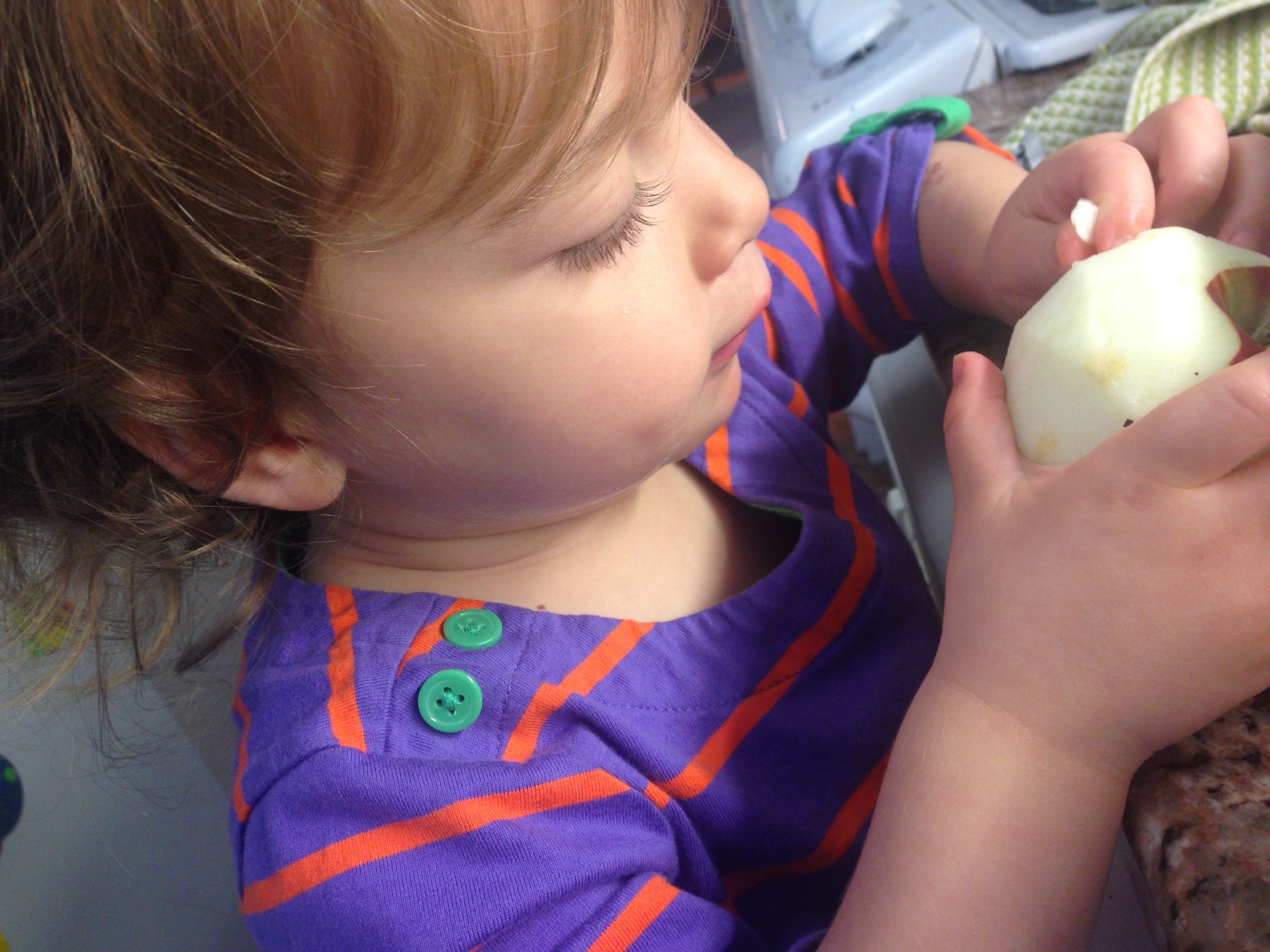Six years ago, almost to the date, I started feeding my daughter solid foods. Her first food was avocado. Her second food was pear. Whereas once upon a time, parents were told to start their infants on cereals (rice or barley being most common), these days the emphasis is on pureed fruits and vegetables. My pediatrician wrote a book called The New Basics and inside he writes, "Cereals are high in starch, which is a slow sugar. I’ve observed that an early emphasis on starch contributes to both a predilection for white foods (rice, potatoes, etc.) and the acquisition of a sweet tooth later on." I agree with this philosophy and have actively chosen to feed my kids produce (seasonal and organic whenever possible) instead of cereals for their first foods. One of the great voices for pediatric wellness and healthy eating habits is Dr. Alan Greene. He and his wife, Cheryl Greene, created a campaign called The WhiteOut Movement and their goal is to encourage parents to feed their infants whole grains and real foods, and make feeding white rice cereal to babies obsolete. Dr. Greene says "It's no wonder that America’s kids are hooked on junk food. For the past 50 years the majority of babies in the United States have been given white rice cereal for their very first bite of solid food. Metabolically, it's similar to eating sugar."
So what can you feed your baby? Making your own baby food will save you money and it's a whole lot of fun. When choosing first foods, it's a good idea to think about what can be prepared with little or no preparation. Foods in their most natural form that are excellent first foods for babies include avocados, pears and bananas. Find a ripe one, peel, mash and serve. Just keep in mind that your baby has never used his mouth and tongue for swallowing anything other than breast milk or formula. Bear with him as he learns to get the hang of the whole spoon/solids thing.
Other popular foods that can be easily prepared and served include: apple, squash, sweet potato, honeydew, cantaloupe and zucchini. Bake, boil, steam or roast until soft, and then mash and serve. You can use your food mill to puree the foods into a uniform texture for baby. If you prepare foods in bulk, you can freeze them in an ice cube tray and defrost as needed. That's a good time-saving strategy for a working mom.
October is perfect for apples so here's what I would do to prepare that:
Pureed apple (baby's first applesauce)
- Peel and core two apples (my preference is organic).
- Cut into one inch chunks (approximately, but don't sweat it if they're bigger).
- Place chunks into a pot with about 1/8 c of water and put on medium heat.
- Let the apples cook, stirring occasionally, until they are soft.
- Mash completely until the texture is smooth. You can use your food mill if you've got one but it's not absolutely necessary for apples.
- Take about 1-2 tablespoons out and place in a bowl for baby's first feeding. Store the rest in an air-tight container in your fridge.
Good luck! And please keep me posted on how things go!








